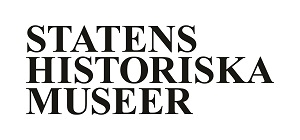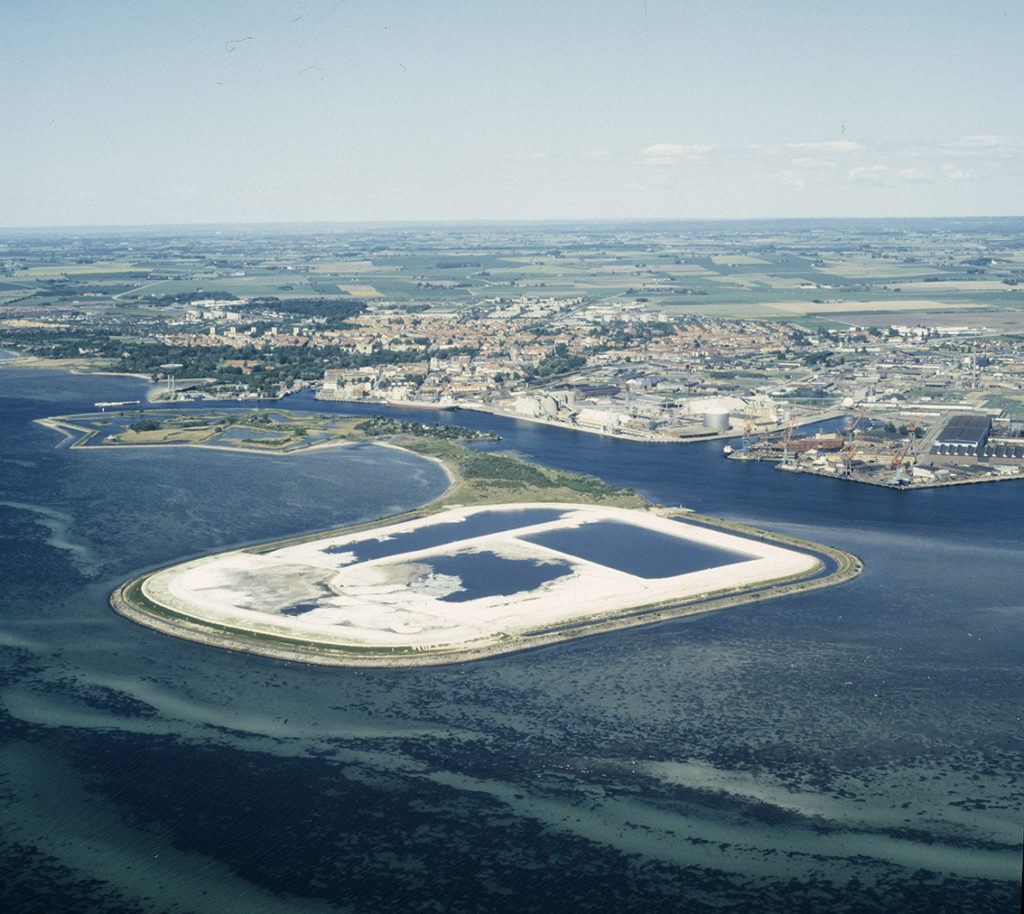
Toxic heritage, or how to wash an island
Image above: Gipsön in the 1980s. Photo: Anders Hilding/Landskrona museum.
The film “How to Wash an Island” by the art platform (p)Art of the Biomass tells the story about a man-made, toxic island in Sweden that most Swedes never have heard of. The island exists because synthetic fertilizers exist. It has been created from phosphogypsum, a by-product from the production of fertilizers from phosphate rock. The construction of this landfill at sea began in 1978, and was initiated by the chemical industry Supra AB (later Hydro, today Yara). Contaminated water is still treated on the island and prevented from leaking into the sea, thirty years after Yara’s production of phosphorous has stopped. How long it will take until the island is clean enough for rainwater to be safely released into the sea is impossible to predict, all predictions have failed so far and been extended by decades.
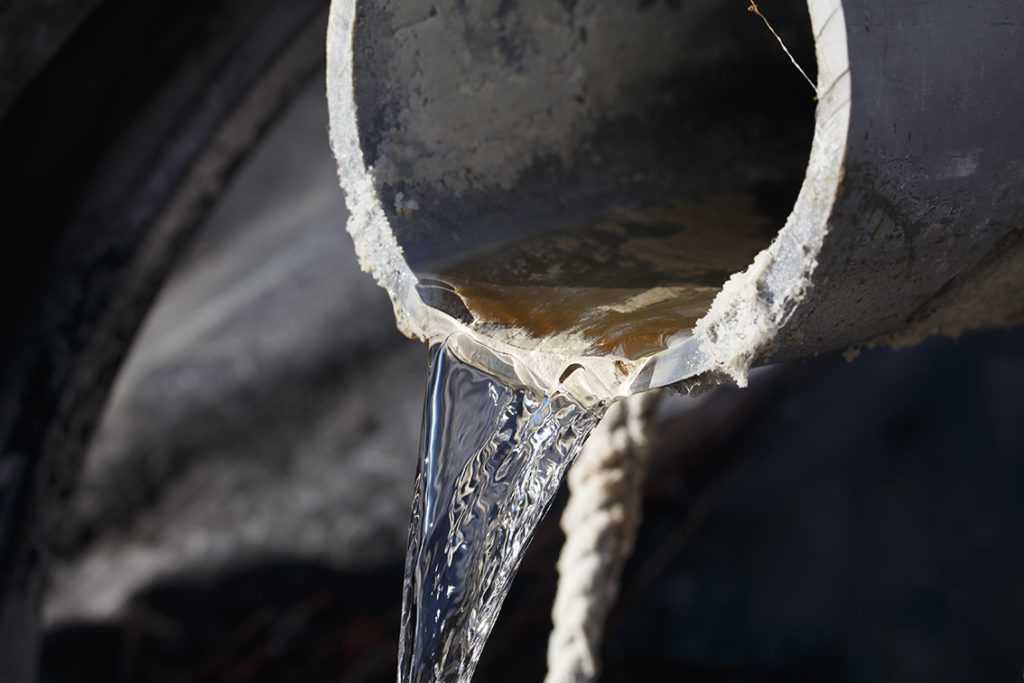
The artists Malin Lobell, Janna Holmstedt and Karin Wegsjö approach the island as a post-industrial, readymade sculpture that stands as a monument over the future optimism of yesteryear, when the green revolution set out to feed the world. In the Humus economicus research group, we further reflect on Gipsön, the Gypsum Island, at the intersection of art, urban studies and critical heritage studies. In June 2021, we made our first field trip to the Gypsum Island, other journeys have followed as the work continues.
A monument stands as a reminder, not necessarily of great deeds but of a certain kind of legacy carried over from our ancestors, a legacy with intended as well as unintended and unforeseen long-term consequences that binds places, matter, and beings together across generations. The perpetual washing of the Gypsum Island, performed by rain and melting snow, together with pumps and pipes that constitutes a human-assisted circulatory system of water that prevents toxins from leaking into the sea, followed up by annual tests to measure PH and contaminants, all form part of this legacy. Slow violence (Nixon 2011) demands slow care, and at this specific site it is performed by humans and non-human agents alike, such as mussels and algae filtering water and absorbing excess phosphorus, while plants, microbes and fungi slowly builds soil and create new habitable ground for insects, birds and mammals.
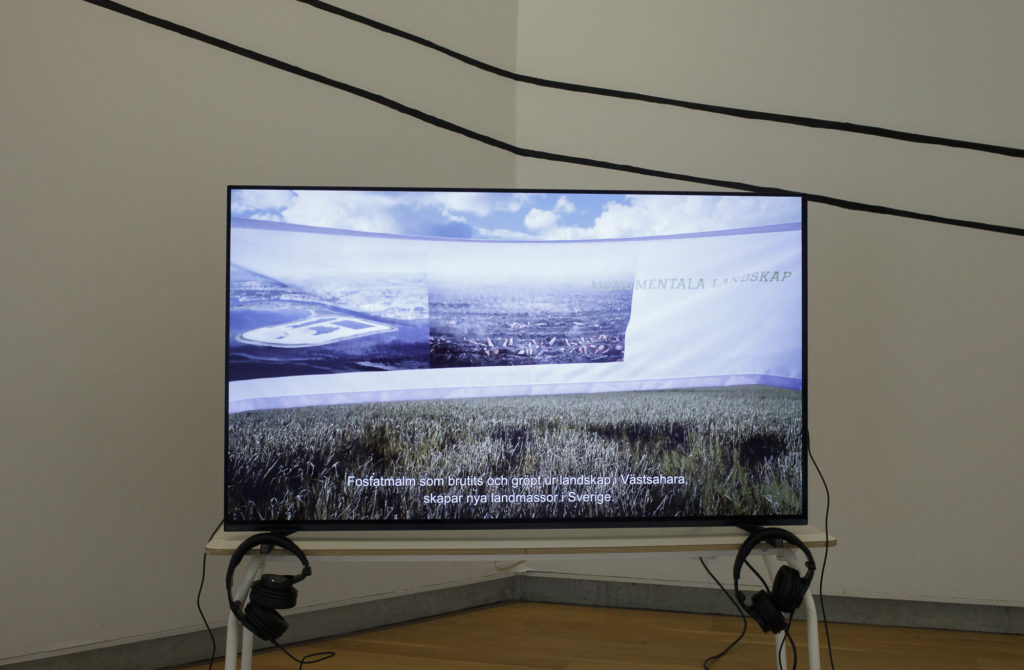
Phosphorus connects mines, waste deposits, and agricultural soils with the food on our table and in our stomachs. Phosphorus powers the cells of plants as well as humans, and is a component of bones, teeth, and DNA. Excess phosphorus, combined with excess nitrogen, pollutes the sea, causes algae blooms and oxygen depletion, in a process called eutrophication, leading in turn to so-called dead zones, oxygen poor areas without the ability to sustain life. The artistic act to declare the Gypsum Island a monument is an act of remembrance of the interconnectedness and knottings that tie us to material and multispecies pasts, presents, and futures.
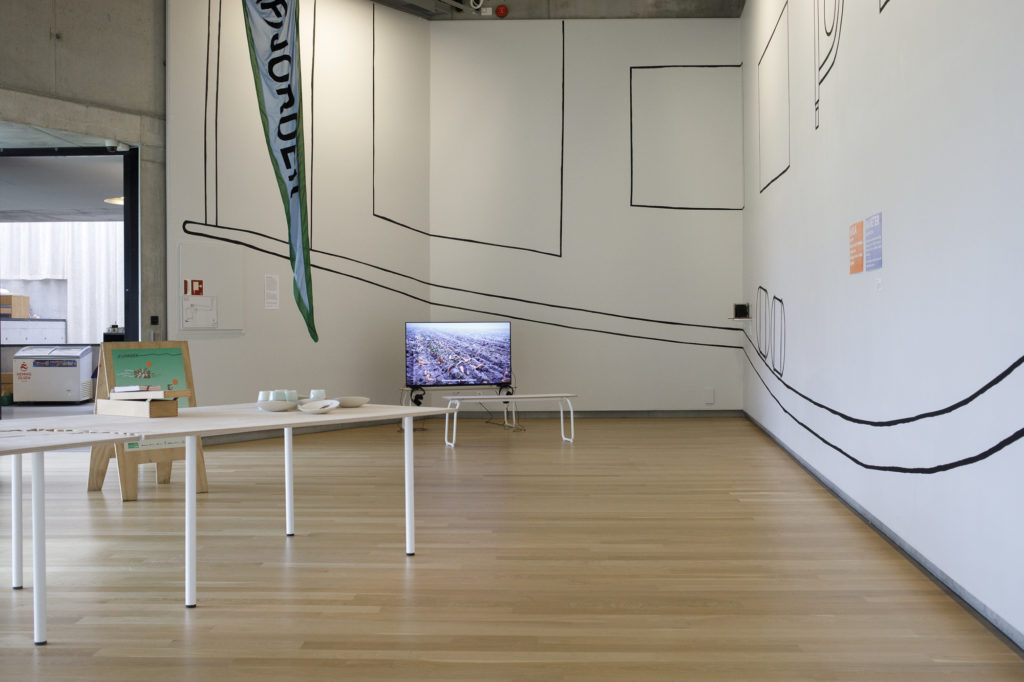
The film was shown as a work-in-progress at Kunsthuset Kabuso in Øystese, Norway, in an exhibition with participants from the week-long event (F)jorden, organized by the artist group Skifte.Land. This amazing floating symposium gathered artists and researchers on the old ship Mathilde on a week-long journey in the Hardangerfjord, from Aga to Bergen, around questions of food security, resilience, and sustainable futures. Read about the journey and floating symposium here!
In the exhibition, works made in relation to the journey are shown and it will be open between October 1 and December 31, 2022. The film was made with support from the Swedish Art Grants Committee.
References
Nixon, Rob. (2011). Slow violence and the environmentalism of the poor. Harvard University Press. https://doi.org/10.4159/harvard.9780674061194
